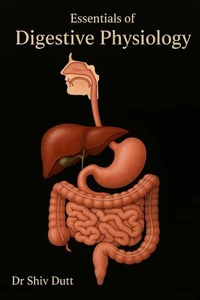Psychopharmacology: A Clinical and Mechanistic GuideDescription:Psychopharmacology: A Clinical and Mechanistic Guide offers a comprehensive exploration of how drugs affect the brain and behavior, providing medical and allied health students with a solid foundation in the pharmacological management of mental health disorders. The book bridges neuroscience, pharmacodynamics, and therapeutic applications in psychiatry, making it a valuable tool for both learners and practitioners.
Key Features: Systematic Drug Classification: Covers major psychotropic drug classes-antidepressants, antipsychotics, mood stabilizers, anxiolytics, sedatives, stimulants, and cognitive enhancers. Mechanisms Explained: Detailed yet accessible explanations of how psychotropic agents act on neurotransmitter systems (e.g., serotonin, dopamine, GABA, glutamate). Clinical Applications: Aligned with DSM-5 categories, the book addresses drug choices for depression, schizophrenia, bipolar disorder, anxiety, OCD, ADHD, and more.
Adverse Effects and Drug Interactions: Highlights key risks, side effects (e.g., EPS, metabolic syndrome), and clinically significant drug-drug interactions. Tables, Charts, and Mnemonics: Useful for rapid learning and exam preparation-ideal for MBBS, BAMS, nursing, and psychology students. Evidence-Based Insights: Includes up-to-date therapeutic guidelines, black-box warnings, and treatment algorithms used in modern psychiatric care.
Whether you're a student studying for exams or a clinician seeking a practical refresher, Psychopharmacology: A Clinical and Mechanistic Guide provides the clarity and depth you need in the evolving field of psychiatric drug therapy.
Psychopharmacology: A Clinical and Mechanistic GuideDescription:Psychopharmacology: A Clinical and Mechanistic Guide offers a comprehensive exploration of how drugs affect the brain and behavior, providing medical and allied health students with a solid foundation in the pharmacological management of mental health disorders. The book bridges neuroscience, pharmacodynamics, and therapeutic applications in psychiatry, making it a valuable tool for both learners and practitioners.
Key Features: Systematic Drug Classification: Covers major psychotropic drug classes-antidepressants, antipsychotics, mood stabilizers, anxiolytics, sedatives, stimulants, and cognitive enhancers. Mechanisms Explained: Detailed yet accessible explanations of how psychotropic agents act on neurotransmitter systems (e.g., serotonin, dopamine, GABA, glutamate). Clinical Applications: Aligned with DSM-5 categories, the book addresses drug choices for depression, schizophrenia, bipolar disorder, anxiety, OCD, ADHD, and more.
Adverse Effects and Drug Interactions: Highlights key risks, side effects (e.g., EPS, metabolic syndrome), and clinically significant drug-drug interactions. Tables, Charts, and Mnemonics: Useful for rapid learning and exam preparation-ideal for MBBS, BAMS, nursing, and psychology students. Evidence-Based Insights: Includes up-to-date therapeutic guidelines, black-box warnings, and treatment algorithms used in modern psychiatric care.
Whether you're a student studying for exams or a clinician seeking a practical refresher, Psychopharmacology: A Clinical and Mechanistic Guide provides the clarity and depth you need in the evolving field of psychiatric drug therapy.

 , qui est-ce ?
, qui est-ce ?